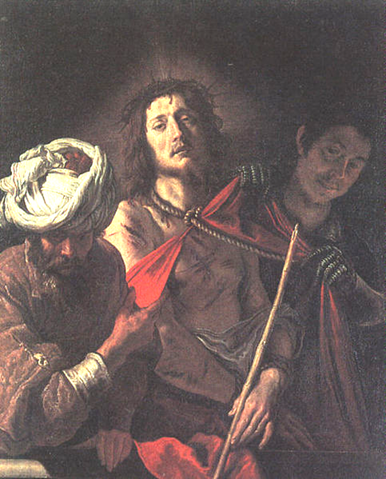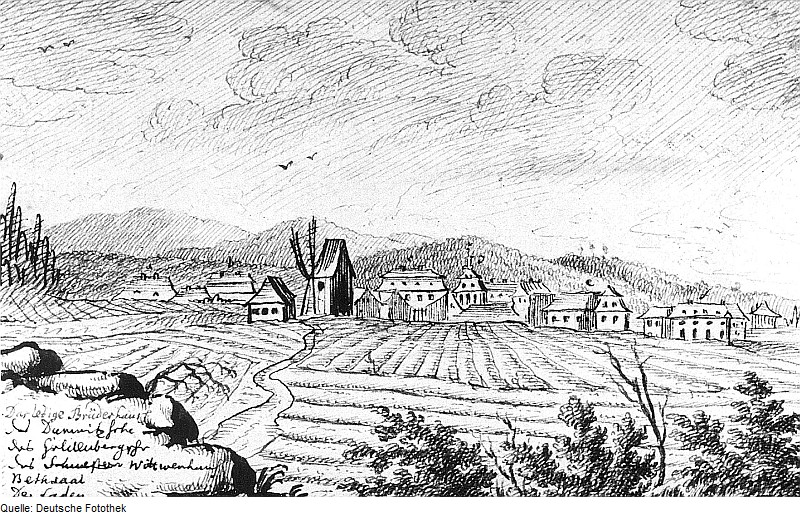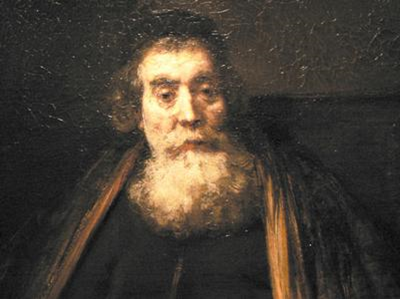Global Pentecostal Renaissance? Reflections on Pentecostalism, Culture, and Higher Education, by Jeff Hittenberger

Ecce Homo (between 1600 and 1610) by Domenico Feti (c. 1589 – 1623).
Image by way of Wikimedia Commons.
Fifty years after Comenius’s death, a nineteen-year-old count from Germany stood in a Dusseldorf museum looking at a painting by Dominico Feti entitled Ecce Homo, or “Behold the Man.” The painting depicted a suffering Christ at the time of His crucifixion. Underneath the painting, an inscription read: “This is what I have done for you. What will you do for me?” Struck by this question, Nicolas von Zinzendorf committed himself and his resources to Christ. During his studies of law, he met the grandson of Comenius and heard the stories of the Moravians. Not long afterward, he invited the scattered Moravians and other persecuted Christians to take up residence on his vast lands in Germany. The Moravians established a community called “Herrnhut,” or “The Lord’s Watch.”
Zinzendorf helped the Moravians, who had survived in small groups and were suspicious of others, to begin to live together and establish a renewed sense of Christian community. Zinzendorf read Comenius’s Ratio Disciplinae, which informed the development of a “new brotherly agreement” to guide the life and faith of the Moravian church. The Moravians began to pray together, with Zinzendorf as their leader. In 1727, during a communion service, the gathered believers at Herrnhut experienced a powerful visitation of the Holy Spirit and what is described as “the Moravian Pentecost” followed, including glossolalia, healings, a calling to missionary service, and a round-the-clock prayer vigil that lasted for one hundred years.15

Herrnhut, 1765, in what is today eastern Saxony, Germany.
Out of this Moravian Pentecost arose one of the earliest Protestant missionary movements, with emissaries of Herrnhut circling the globe in missionary work, including ministry among the people enslaved in the Americas and the establishment of thriving churches in Africa.
Zinzendorf became known as an advocate for a “heart religion” that went beyond what he perceived as dry intellectualism in the state Lutheran church. Just as an emotional religious experience that does not affect the mind or behavior can become a distortion, so an intellectual faith that makes no room for emotion and no impact on behavior can become like “a whitewashed tomb.”
Zinzendorf, like Comenius, encouraged an exploratory approach to life and a holistic Christian faith that integrated heart, mind, soul, and strength through the power of the Holy Spirit. The Moravians experienced the transformative power of Christ, which became the basis for all their actions. The results were stunning and global. George Whitefield, who along with Jonathan Edwards was the most notable preacher in the American First Great Awakening, housed the Moravians as they established themselves as missionary communities in America. Whitefield and Edwards were the fathers of the Evangelical movement in the United States. John and Charles Wesley, fathers of the Methodist revival and churches, were discipled by the Moravians. The Evangelical and Wesleyan movements laid the foundations for the Pentecostal revival that began in the early years of the twentieth century and mirrored the Pentecostal experience of the Moravians at Herrnhut.
The purpose of Pentecost is to bring the reality, redemption, and reconciliation of God in Christ to the world, empowering all who call on Him to fully become the people He created them to be.
In what sense does Comenius serve as a model for a “Global Pentecostal Renaissance”? Note the ways in which Comenius embodied what is referred to above as the Azusa Street DNA.
First, Comenius embodied an exploratory approach to life and faith. He saw education and learning as an expression of love for Christ and faithfulness to His calling. Comenius advocated for the education and development of all people, giving special opportunity and attention to women. Consequently, women came to occupy key leadership roles in the Moravian movement.

This portrait of Comenius by Rembrandt was once named “Portrait of an Old Man (The Rabbi),” because the subject was unknown. However, Czech historian Karel Chytil speculated in 1914 that it was a portrait of Comenius. In 2005, Rembrandt expert Ernst van de Wetering said this claim was proven.
Image by way of Wikimedia Commons.
Second, the scope of Comenius’s mission and the character of his movement were global, as he sought to give witness to Christ and mediate conflicts across Europe. Comenius worked to build a Christian community of love and trust that welcomed the hurting, the exile, and the stranger and reconciled all within the body of Christ. The Moravians became the forerunners of the modern missionary movement .
Third, Comenius’s approach to education was holistic and integrational. He advocated for education and learning as keys both to understanding God’s world and to serving that world through acts of compassion, witness, and artistic and literary expression.
Fourth, his life and philosophy and work were Christ-centered, rooted in a passionate love of Jesus Christ and a desire to obey and serve Him. Comenius laid the groundwork that encouraged the Moravians to receive the empowerment of the Holy Spirit as the basis for community and service.
Comenius modeled for the Moravians and the whole church a spirituality that integrated body, mind, and spirit under the Lordship of Christ, enduring hardship without losing faith.
Ultimately, Comenius’s interest was not in building the Moravian Church, per se, or in spreading Moravianism. He loved his people and served as their bishop, but he had a larger vision rooted in his global perspective and his faith in Jesus Christ as Lord. He wrote:
To all Christian churches together I bequeath a lively desire for unanimity of opinion and for reconciliation among themselves, and for union in faith, and love of the unity of spirit. May the spirit which was given to me from the very beginning by the Father of spirits be shed upon you all, so that you would desire as sincerely as I did the union of all who call upon the name of Christ in truth.16
The Moravian Church is only a small part of the legacy of Comenius (and Zinzendorf). The far greater part of their legacy belongs to the whole church of Christ, in the form of an integrated faith, empowered by the Spirit, reaching the whole world, and even to the world beyond the church, in the form of education systems that consider every child to be precious and worthy of our best efforts (even where societies have lost the underlying faith that every human is created in the image of God).
The purpose of Pentecostalism is not its own perpetuation or institutionalization.
This also is a lesson for Pentecostalism from Comenius: the purpose of Pentecostalism is not its own perpetuation or institutionalization. The purpose of Pentecostalism is, like the purpose of Pentecost, to bring the reality, redemption, and reconciliation of God in Christ to the world, empowering all who call on Him to fully become the people He created them to be. A Global Pentecostal Renaissance will help us remember our core identity and our core mission.
Category: Living the Faith, Pneuma Review, Spring 2013


